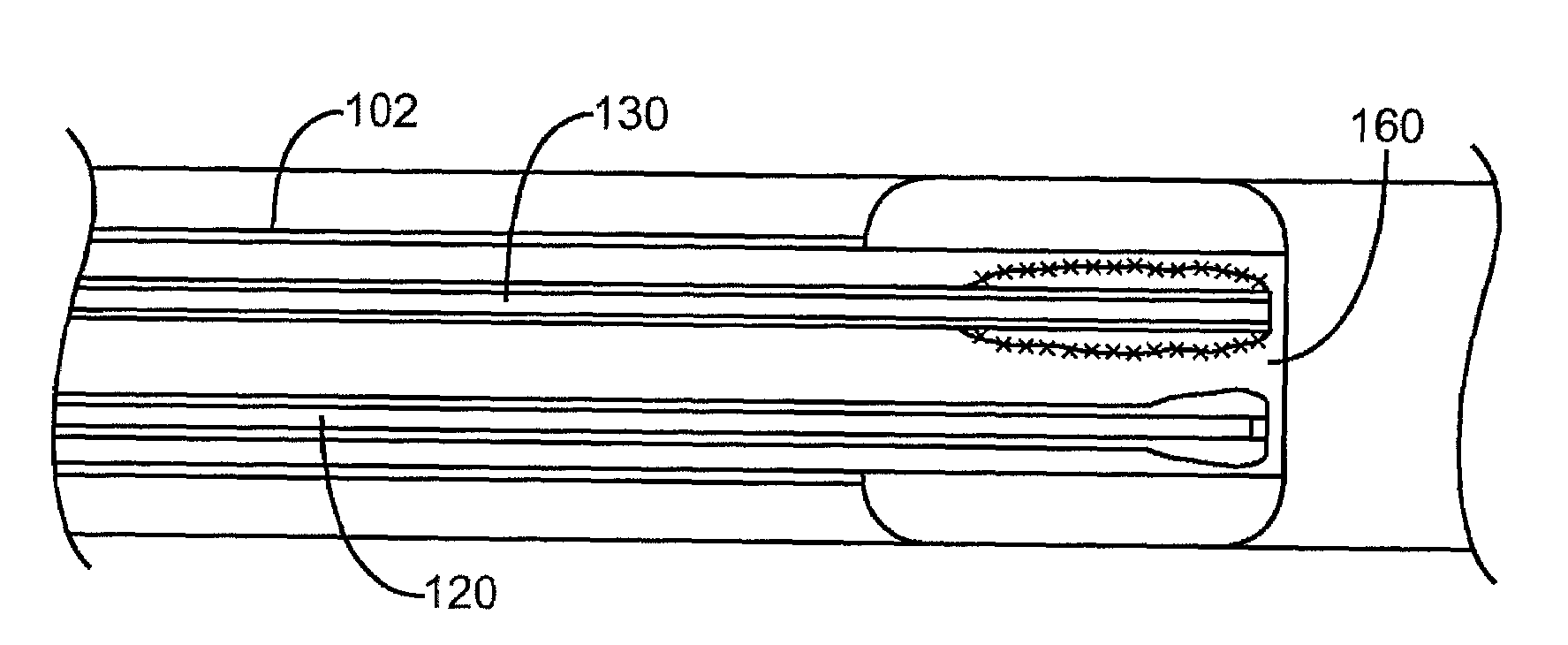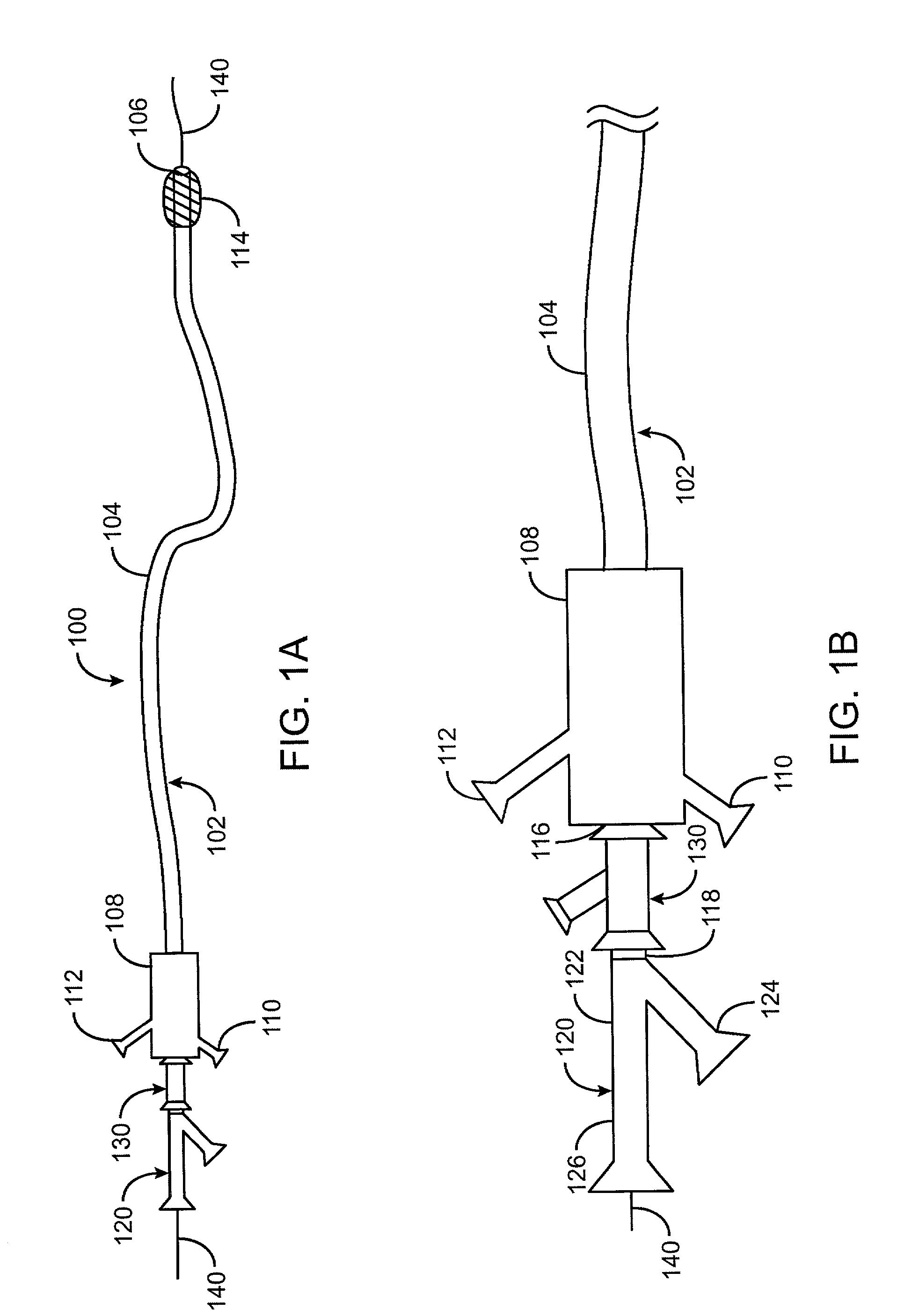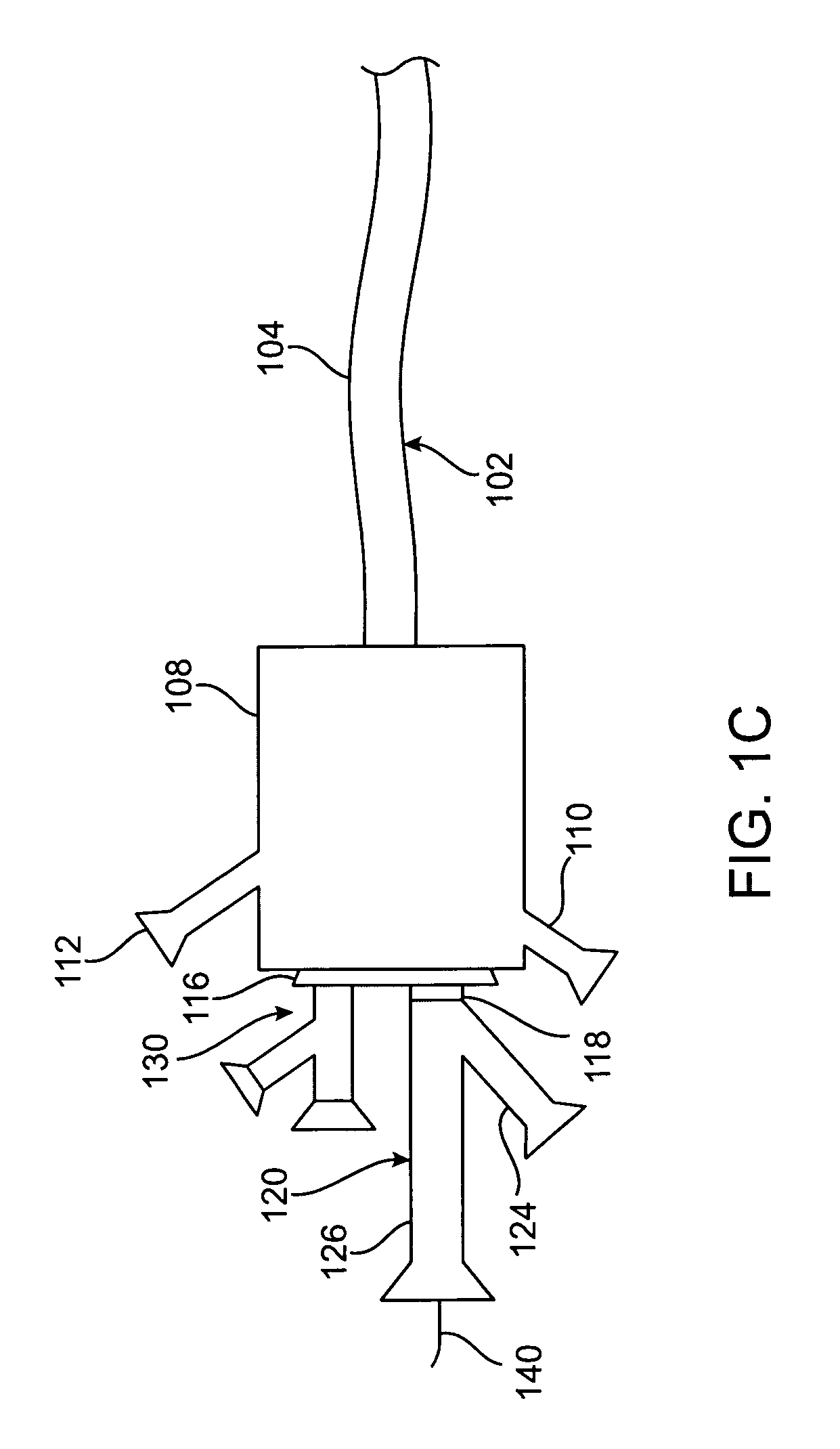Embolization protection system for vascular procedures
a protection system and emboli technology, applied in the field of medical procedures, can solve the problems of reducing the likelihood of emboli before effective capture, and achieve the effect of high sensitivity and better imaging
- Summary
- Abstract
- Description
- Claims
- Application Information
AI Technical Summary
Benefits of technology
Problems solved by technology
Method used
Image
Examples
Embodiment Construction
[0039]FIG. 1a is a perspective drawing of an embolization protection system 100 constructed according to the present invention. FIG. 1a shows an outer catheter 102 having an extended shaft 104 with a distal end 106 and a proximal adaptor 108. FIG 1b is a detail drawing of a proximal portion of the catheter system of FIG. 1 showing the proximal adaptor 108. FIG. 11 is a cutaway view showing the coaxial arrangement of the catheter shafts in the distal embolic protection system. The proximal adaptor 108 may be an injection molded part or it may be assembled from separate components. The proximal adaptor 108 has several ports: one is an efflux port 110 where fluid is removed from the suction or efflux lumen 160 of the catheter 102, an optional inflation port 112 in connection with an inflation lumen 162 for inflating an occluding balloon 114 at or near the distal end 104, for those embodiments with either a balloon or self-expanding foam as the occluding mechanism, a treatment port 116 ...
PUM
 Login to View More
Login to View More Abstract
Description
Claims
Application Information
 Login to View More
Login to View More - R&D
- Intellectual Property
- Life Sciences
- Materials
- Tech Scout
- Unparalleled Data Quality
- Higher Quality Content
- 60% Fewer Hallucinations
Browse by: Latest US Patents, China's latest patents, Technical Efficacy Thesaurus, Application Domain, Technology Topic, Popular Technical Reports.
© 2025 PatSnap. All rights reserved.Legal|Privacy policy|Modern Slavery Act Transparency Statement|Sitemap|About US| Contact US: help@patsnap.com



